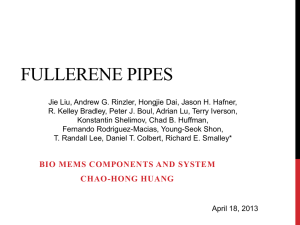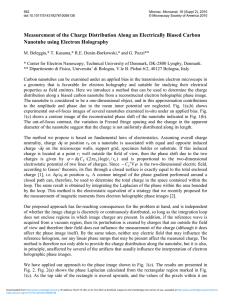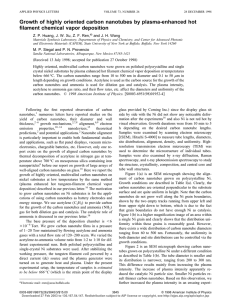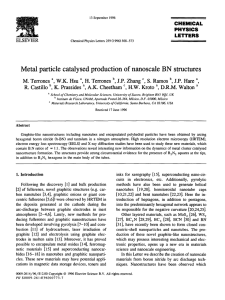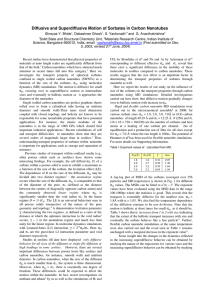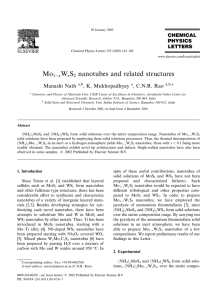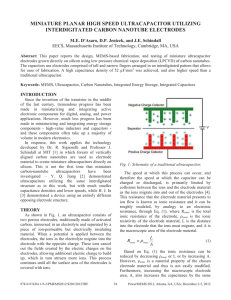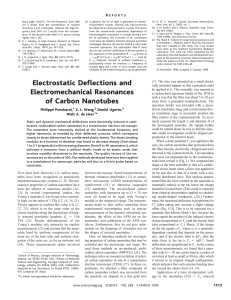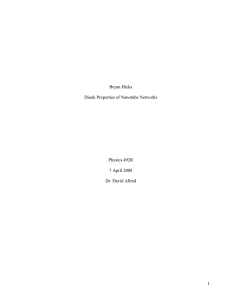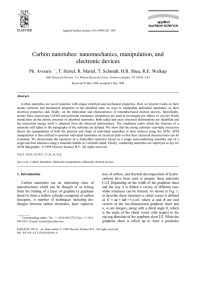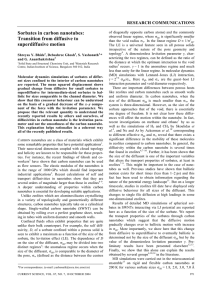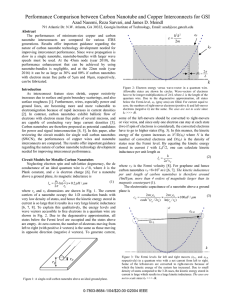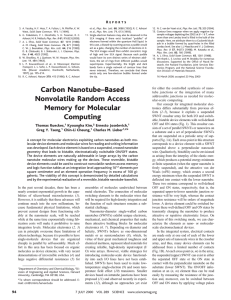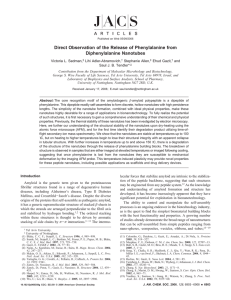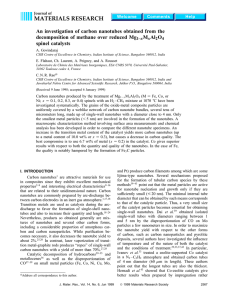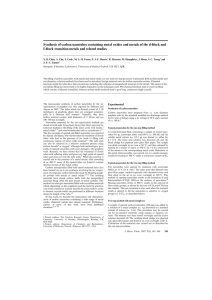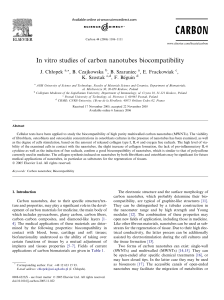3.22 Mechanical Properties of Materials
advertisement
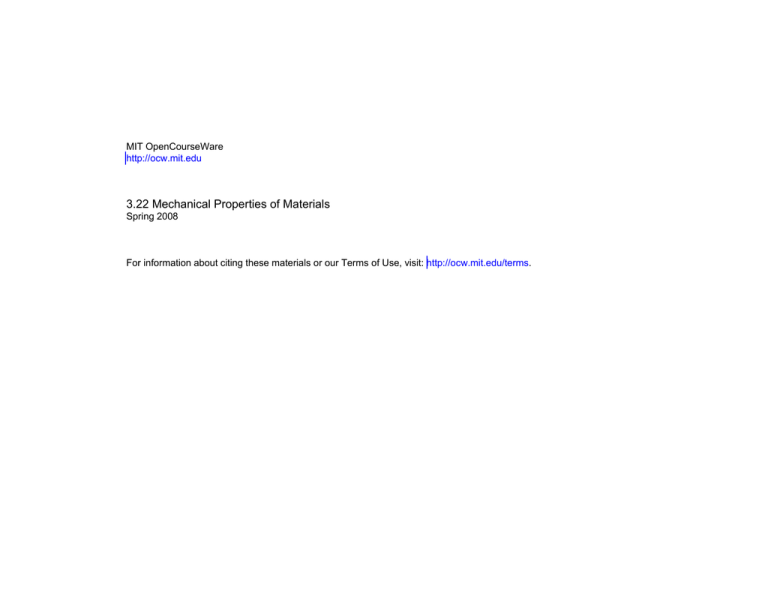
MIT OpenCourseWare http://ocw.mit.edu 3.22 Mechanical Properties of Materials Spring 2008 For information about citing these materials or our Terms of Use, visit: http://ocw.mit.edu/terms. Carbon Nanotube Mechanics Image removed due to copyright restrictions. Please see http://en.wikipedia.org/wiki/Image:Kohlenstoffnanoroehre_Animation.gif Mark Mascaro Robert Mitchell MIT Department of Materials Science and Engineering Cambridge, MA 02139 USA 3.22 Mechanical Behavior of Materials May 2008 Big Picture • Macroscopic description of the phenomenon • Very high tensile strength, but buckles easily in compression (11-63 GPA, 1001000x better than ASTM 1040 steel) [1] • Very high Young’s Modulus (~1 TPa) • Buckling behavior very similar to deformation of cylindrical shells [2] Image removed due to copyright restrictions. Please see Fig. 3b,c,d in [2]. Courtesy of National Academy of Sciences, U. S. A. Used with permission. Source: Chen, Xing, et al. "A cell nanoinjector based on carbon nanotubes." PNAS 104 (20 May 2007): 8218-8222. Copyright 2007 National Academy of Sciences, U.S.A. • Engineering applications of Carbon Nanotubes • Composite materials to take advantage of high tensile strength • Cell nano-injection - Delivery of chemical load into cells without solvents and without damage of the cell membrane [3] [1] Pantano, A., et al. “Mechanics of deformation of single- and multi-wall carbon nanotubes.” Journal of the Mechanics and Physics of Solids 52 (2004): 789-821 [2] Poncharal P., et al. “Electrostatic Deflections and Electromechanical Resonances of Carbon Nanotubes.” Science 283 (1999): 1513-1516 [3] Chen, X., et al. “A cell nanoinjector based on carbon nanotubes.” PNAS 104 (20 May 2007): 8218-8222 3.22 Mechanical Behavior of Materials Microscopic mechanism • Microscopic behavior of Carbon Nanotube Failure •Failure proceeds via breaking of C-C bonds •Fracture propagation direction is a function of chirality [4] •Sword-in-Sheath Failure predominant in MWCNT structures [5] Images removed due to copyright restrictions. Please see Fig. 6 in [4] and Fig. 1 in [5] [4] Belytschko, T., et al. “Atomistic Simulations of Nanotube Fracture.” Physical Review B 65 (2002): 235430. [5] Yu, M. F., et al. “Controlled sliding and pullout of nested shells in individual multiwalled carbon nanotubes.” Journal of Physical Chemistry B 104 (2000): 8764-8767 3.22 Mechanical Behavior of Materials Prediction & Optimization • Prediction • Resonance can be modeled as a thinwalled cylindrical cantilever beam [2] • Optimization of CNT Mechanical Properties • Minimization of crystalline defects is critical • Chirality has a lesser influence on strength [4] Case: Failure Strain: Pristine Armchair 18.7% Pristine Zig-Zag 15.5% 5/7/7/5 Armchair 14.3% One Atom Removed 10% 3.22 Mechanical Behavior of Materials Images removed due to copyright restrictions. Please see Fig. 2 in [2] and Fig. 8 and 9 in [5].




